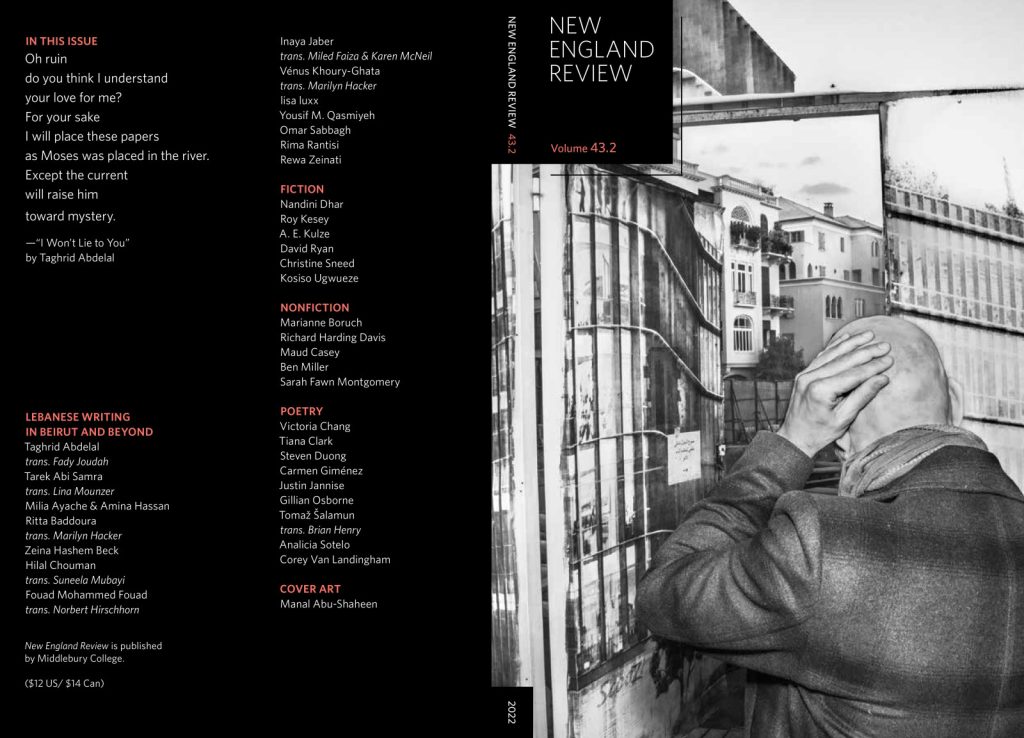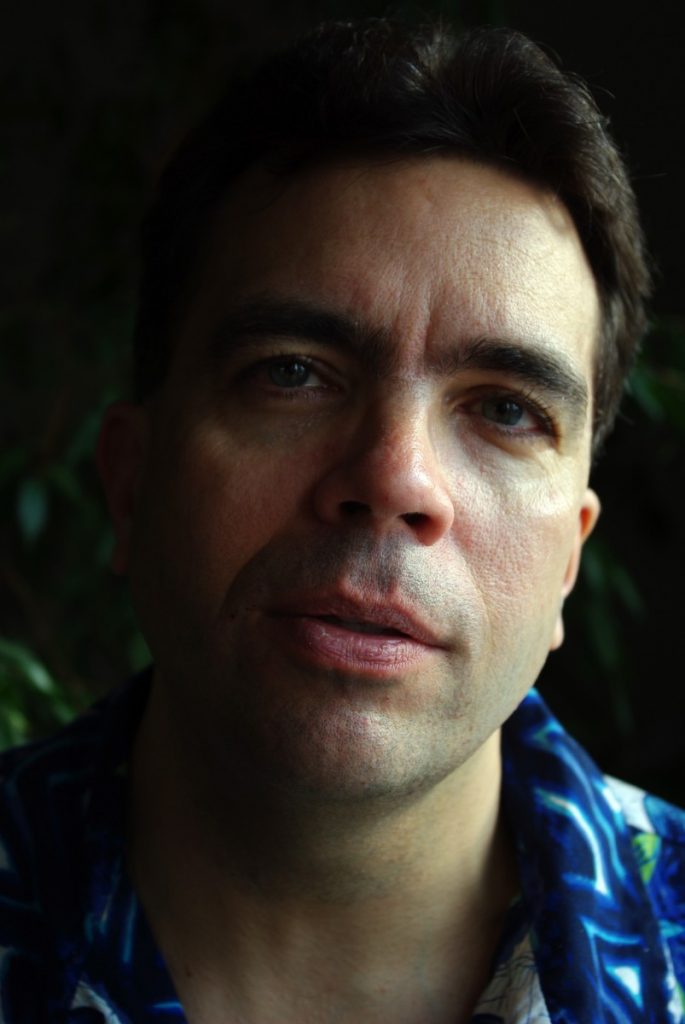
Readers will find plenty of places to go in the summer issue of NER—now shipping from the printer—and like true travelers will find expectations upended and experiences that shift their ways of seeing.
Take a look inside our international feature on new writing from Lebanon, in which guest editor Marilyn Hacker gathers a polyglot and multinational range of writers, including poets Zeina Hashem Beck, lisa luxx, and Omar Sabbagh, and many new writers in translation, among them Taghrid Abdelal (trans. Fady Joudah) and Hilal Chouman (trans. Suneela Mubayi).
Or travel into the wilds of the imagination with new stories by David Ryan, Roy Kesey, and Kosiso Ugwueze and with poets Gillian Osborne, Corey Van Landingham, and Steven Duong—among many others. New essays by Maud Casey and Sarah Fawn Montgomery turn new lenses on #MeToo and climate doom, while Ben Miller and Marianne Boruch look at the origins of artistic experience.
And that’s just some of what you’ll find in NER 43.2. Take a look at the full table of contents to preview some of what’s on offer and order a copy for yourself, or subscribe, right here.
